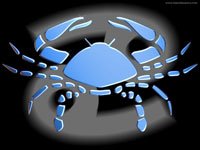Prostate cancer
Overview of prostate cancer
Prostate cancer is one of the main causes for cancer deaths in Indian males. The prostate is a glandular organ present only in males and hence only men develop prostate cancer. The prostate is normally about 3 cm long (slightly more than 1 inch) and lies at the neck of the bladder and in front of the rectum. The prostate surrounds the urethra, which is a tubular structure that carries sperm and urine out of the penis. It produces a thin, milky fluid that is added to the sperm at the time of ejaculation. Older men often have an enlarged prostate, which is a noncancerous condition called Benign Prostatic Hypertrophy (BPH) that causes urinary symptoms such as getting frequent sensation to urinate. Almost all prostate cancers arise from the secretory glandular cells in the prostate. Almost all prostatic cancers are prostatic adenocarcinomas.
Causes of prostate cancer
The main cause that may be singled out for prostate cancer is still unknown but hormonal, genetic, environmental, and dietary factors are thought to play major roles in deciding the chances for prostate cancer to occur. Factors that maybe linked with development of prostate cancer are:
Age: Strong correlation exists between increasing age and developing prostate cancer. Prostate cancer increases steadily from 1 in 100,000 for men aged 40 years to 1146 per 100,000 in men aged 85 years. However past the age of 50 years there are most definite chances of developing prostate cancer. The median age at diagnosis of prostate cancer is 65 years. More than 80% of prostate cancers are diagnosed in men older than 65 years. Autopsy records indicate that 70% of men older than 90 years have at least one region of cancer in their prostate.
Race and genetic factors: Men who have a history of prostate cancer in their family, especially if it was a first-degree relative such as a father or brother, are at an increased risk. This risk may be 2-3 times greater than the risk for men without a family history of the disease.
Diet: High fat diet has been associated with an increased risk of prostate cancer.
Chemical agents: Exposure to chemicals such as cadmium has been implicated in the development of prostate cancer. There is no proven link between frequency of sexual activity and prostate cancer risk.
Symptoms of prostate cancer
Early stages of prostate cancer have no symptoms. Most prostate cancers are discovered incidentally when a digital rectal exam is performed. Symptoms usually appear when the tumor causes some degree of urinary blockage at the bladder neck or the urethra.
The usual symptoms are:
Difficulty in starting and stopping the urinary stream
Increase in frequency of urination
Pain and irritation while urinating.
The urinary stream may be diminished (urinary retention), or it may simply dribble out.
Even after urination, there is a sense of bladder fullness because the bladder has not been fully emptied.
The symptoms that usually occur when the cancer is advanced are:
Blood in the urine (hematuria)
Painful ejaculation
Impotency (inability to have an erection).
As the cancer advances to cause a greater blockage, bladder function may deteriorate further.
Men with such advanced cancers sometimes experience recurring urinary tract infections.
Despite these symptoms, many men do not seek medical care until the cancer has spread. Symptoms of metastatic disease are:
Fatigue
Malaise
Weight loss
Spread to the bones causes deep bone pain, especially in the hips and back
Bone fractures from weakening of the bone.
Treatment of prostate cancer
Treatments for prostate cancer are effective in most men but they do cause both short- and long-term side effects that may be difficult to accept. Family members should discuss treatment options in detail with urologist and other physicians. Depending on the stages of cancer the treatment may include:
Biopsy
Orchidectomy
Hormonal therapy
TURP
Chemotherapy
Radiation therapy
Source

